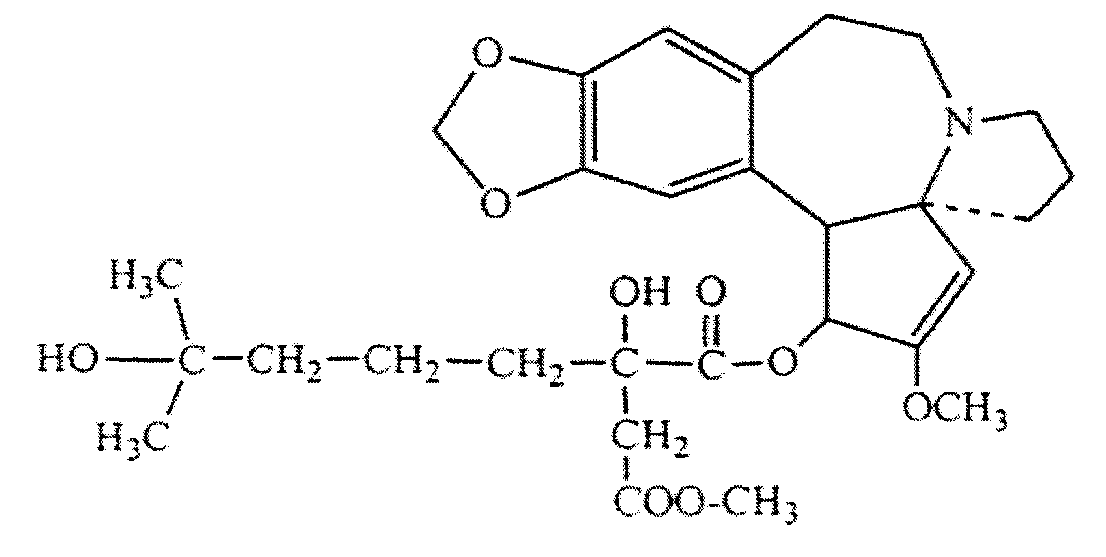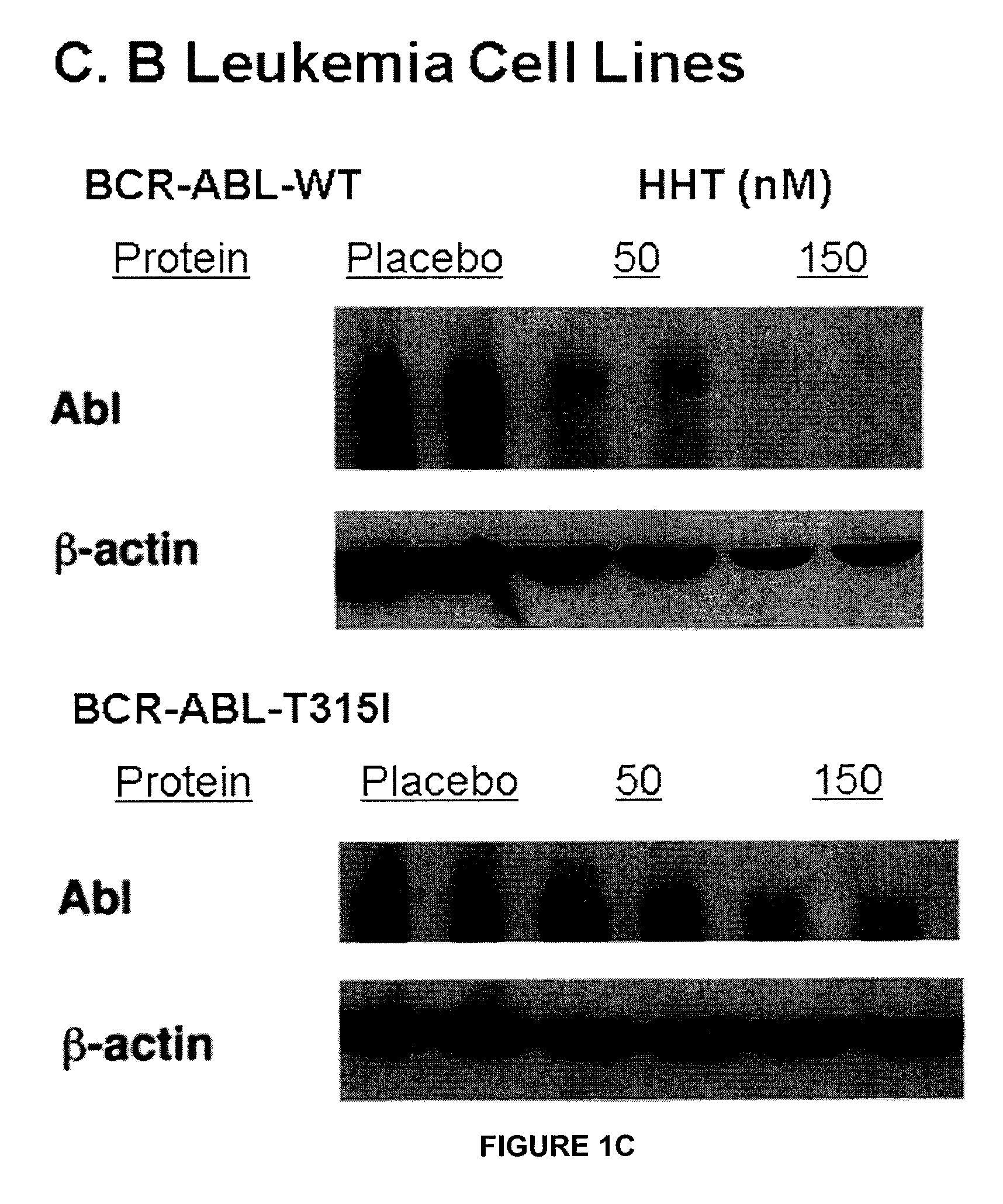Leukemic stem cell ablation
a stem cell and leukemic technology, applied in the field of leukemic stem cell ablation, can solve the problems of resistance to gleevac and remission of disease, and achieve the effect of reducing or eliminating leukemic stem cells
- Summary
- Abstract
- Description
- Claims
- Application Information
AI Technical Summary
Benefits of technology
Problems solved by technology
Method used
Image
Examples
example 1
[0044]This example demonstrates that HHT inhibits the proliferation of myeloid and lymphoid cells. Antibodies for Western Blot analysis against c-ABL, Mcl-1 and β-actin were purchased from Santa Cruz Biothechology (Santa Cruz, Calif.). Protein lysates were prepared by lysing cells in RIPA buffer and immunoprecipitation. The retroviral vector MSCV-IRES-eGFP carrying the BCR-ABL cDNA was used to make virus stock for bone marrow transduction / transplantation. Four- to 10-week-old wild-type BABL / c or C57BL / 6 (The Jackson Laboratory) and homozygous SRC triple gene knockout (Lyn− / −Hck− / −Fgr− / −) mice were used for leukemogenesis experiments. HHT (ChemGenex Pharmaceuticals, Inc, CA) was dissolved in accompanying diluent to a stock concentration of 1 mg / ml. Further dilutions were made to working concentrations using media or water.
[0045]FIG. 1A shows the number of viable cells at the indicated drug concentration of HHT (OM) as determined by trypan blue. As demonstrated in FIG. 1B, the express...
example 2
[0046]This example demonstrates that HHT reduces circulating leukemic cells, reduces spleen weight and improves survival in mice with BCR-ABL-WT-induced CML. FIG. 2A is a FACS analysis of circulating leukemic GFP+ cells in mice with BCR-ABL-WT-induced CML. This FACS plot shows the cell distribution for mice treated with placebo or HHT (0.5 mg / kg). The number of circulating leukemic cells (calculated as percentage of Gr-1+GFP+ cells×white blood cell count) in mice with BCR-ABL-WT-induced CML treated with placebo or HHT for 4 days was determined on day 12 after transplantation. FIG. 2B depicts a bar graph for the leukemic cells as well as a bar graph for spleen weight of the mice treated with placebo or HHT. FIG. 2C demonstrates survival of CML mice treated with HHT as compared to those treated with placebo. HHT therefore significantly reduces the number of circulating leukemic cells and the size of the spleen in CML mice. HHT also significantly increased the survival of the CML mice....
example 3
[0047]This example demonstrates that HHT improves survival of mice with BCR-ABL-T315I-induced CML. The number of circulating leukemic cells (calculated as percentage of Gr-1+GFP+ cells×white blood cell count) in mice with BCR-ABL-T315I-induced CML treated with placebo or HHT (0.5 mg / kg) was determined on day 14 after transplantation. HHT significantly reduced the number of circulating leukemic cells as compared to the placebo treated group. FIG. 3B demonstrates that treatment with the HHT also prolonged survival of BCR-ABL-T315I induced CML mice.
PUM
| Property | Measurement | Unit |
|---|---|---|
| Time | aaaaa | aaaaa |
| Electrical resistance | aaaaa | aaaaa |
Abstract
Description
Claims
Application Information
 Login to View More
Login to View More - R&D
- Intellectual Property
- Life Sciences
- Materials
- Tech Scout
- Unparalleled Data Quality
- Higher Quality Content
- 60% Fewer Hallucinations
Browse by: Latest US Patents, China's latest patents, Technical Efficacy Thesaurus, Application Domain, Technology Topic, Popular Technical Reports.
© 2025 PatSnap. All rights reserved.Legal|Privacy policy|Modern Slavery Act Transparency Statement|Sitemap|About US| Contact US: help@patsnap.com



